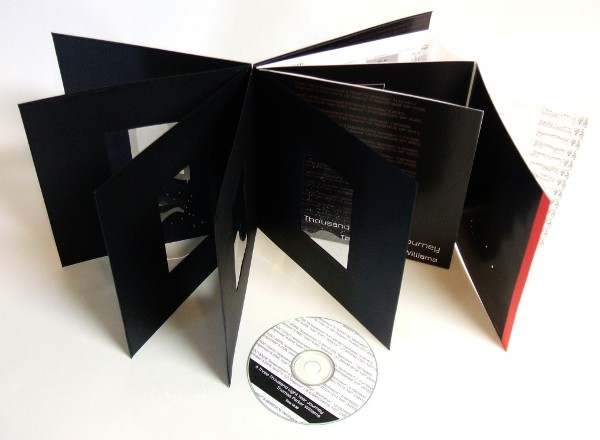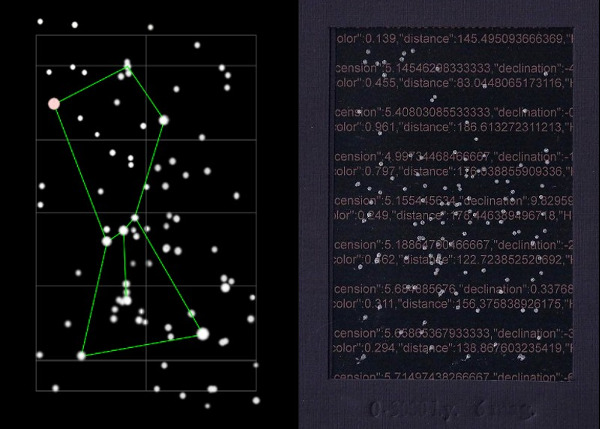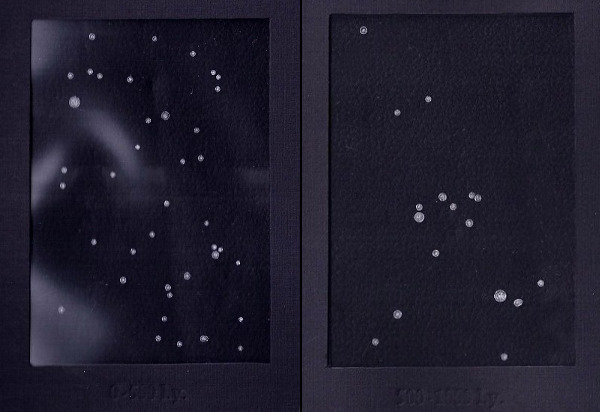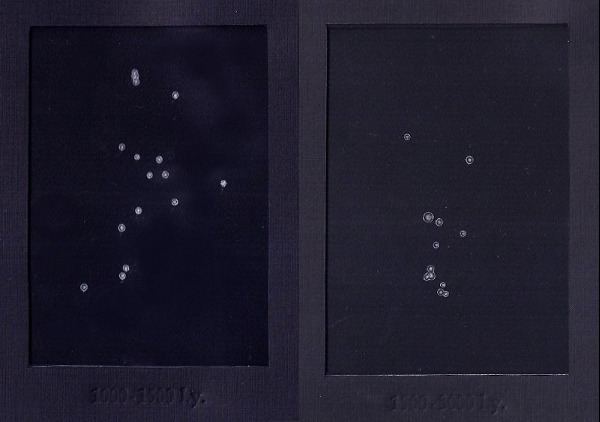CATALOG NO. B57 2013
A Three Thousand Light Year Journey

Specifications Edition of 21
8" x 8-3/8", 5 Letterpress printed maps on Mylar, digital prints with original music composition on CD
Collections
Copies are in private collections
Permanent collection -
Baylor University Crouch Library, Special Collections
University of Texas Austin, Main Library, Special Collection
George Mason University Penwick Library Special Collections
MIT Rotch Library
Reed College Library
Carnegie Mellon University Hunt Library, Special Collections
University of Washington Library Special Collections
University of Maryland Kuka Library, Special Collections
University of Utah Marriott Library, Special Collections
Yale University The Robert B. Haas Family Arts Library, Special Collections
Evergreen State College
University of Rochester
Carleton College Gould Library, Special Collections
A Three Thousand Light Year Journey by Thomas Parker Williams is licensed under a Creative Commons Attribution-NonCommercial-ShareAlike 4.0 International License
A Three Thousand Light Year Journey explores the concepts of time and space by constructing an accurately scaled 3D computer model of a section of the sky, created by the artist with CAD software and creating a musical composition using astronomical data.
Using data obtained online from www.skybeautiful.com, a very small area of the celestial sphere was defined as Right Ascension between 5 hours and 6 hours (15 degrees on the 360 degree rotation of the Earth) and about 13 degrees above and below the celestial equator. This area, about six-tenths of one percent of the observable sky, contains the constellation Orion.
Ninety stars, down to magnitude 6, were used in the 3D computer model which is illustrated in two ways: as a view from Earth as well as a 3D view from space. An additional 134 magnitude 6 stars were added to the 90 to make the transparent maps in the front of the book as well as the musical composition. These 224 stars are representative of what could possibly be seen in this sector of the sky, without optical aid, on a very dark night away from light pollution. This computer model does not include stars and objects that are farther away than three thousand light years or dimmer than magnitude 6.
The star positions in the view from Earth illustration, with the familiar borders of Orion the Hunter, are transformed in the three dimensional image. Stars that appear very close together when seen from Earth can be very far apart. The magnitude or brightness of a star seen from Earth is given a numerical value and is called in astronomy the Apparent Magnitude. The actual brightness or Absolute Magnitude is determined by the Apparent Magnitude and the star's distance away from Earth, and can be many times greater in brightness than it appears to us.
The musical journey uses pitch and the position between the left and right stereo channels to determine a star's location on the 15-degree by 26-degree grid that I have chosen for this project. A star's distance is expressed by the duration of time from the start of the composition, and its brightness is determined by the loudness and duration of the note representing the star. As the journey progresses, the tempo of the composition accelerates each 100 light years until we reach 3000 light years at the end of the composition. The written score describes each star in musical notation. This composition is best listened to with headphones.

View from Earth and 6th magnitude stars

0-500, 500-1000 light year maps

1000-1500, 1500-3000 light year maps
